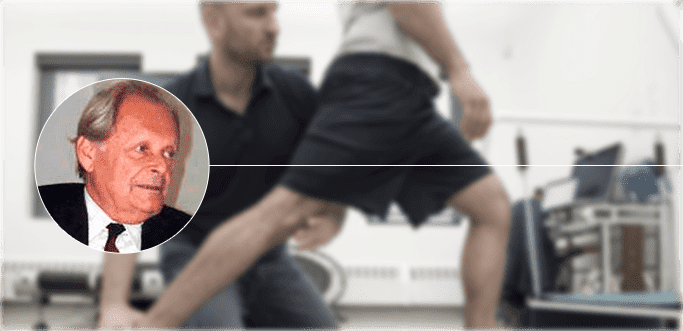August 9, 2023

Vladamir Janda was a respected Czech neurologist, physical therapist and teacher who sadly died in 2002, at the age of 74. However, his life’s work left a legacy that is only now receiving the acclaim it deserves in the United States, in the fields of chiropractic, physical therapy, orthopedics and exercise science.
Janda’s philosophy is not an intervention, or a technique, but an approach to understanding muscle imbalances and how they interact with the nervous system. The Janda approach is based on observation rather than evidence. Through the observation of postural alignment and movement patterns, the Janda approach facilitates clinicians in identifying neurologically mediated syndromes.
Traditionally, orthopedists and physical therapists have taken a structural approach to a traditional orthopedist complaining of shoulder pain, they will evaluate my shoulder, conduct a battery of strength and range of motion tests, and possibly do an MRI. They will then prescribe treatment based on any observed structural anomalies. If they cannot identify the source of pain, they will likely treat the pain itself with pain medication, steroid injections and muscle relaxants.
Janda argued that chronic pain cannot be treated from a structural approach, and that you cannot just look at an isolated structure without taking intor system, because that is where the problem resides.
Janda’s approach is functional rather than structural. From this perspective, chronic pain can be thought of as a software issue, rather than a hardware issue. If you take a structural approach, you are treating the symptor system. When muscles are out of balance, postural and movement anomalies occur that are out of sync with optimal mechanics, manifesting as pain in one or more of the affected structures.
Janda identified two functional groups of muscles, to influences of the CNS, rather than structural changes in the muscles themselves.
Janda always looked at posture first, rarely asking about pain levels, which are subjective. When muscle tension is balanced, optimal posture is achieved, lending to efficiency of balance, conservation of energy and fluid movement. Posture, balance and gait speak volumes about muscle imbalances and the underlying neurological cause of pain. Janda looked for patterns that he associated with three dominant syndromes: Upper Crossed, Lower Crossed and Layer Syndrome.
In Upper Crossed Syndrome, tight muscles in the trapezius and levators and depressors in the mid-back. In this syndrome, the head is shifted forward, the upper trunk shifts rearward, shoulders round forward and the pelvis assumes a posterior tilt.
Lower Crossed Syndrome affects the muscles that govern pelvic alignment, which in turn translates along the entire spinal column. Tightness of the trunk extensor muscles on the dorsal side crosses with tight hip flexors on the ventral side; weakness of the hip extensors on the dorsal side crosses with weak abdominal muscles on the ventral side.
The result is an anterior pelvic tilt coupled with knee flexion, hip flexion, lumbar lordosis and thoracic kyphosis. Alternately, lordosis is minimized and the knees hyperextend. Joint dysfunction occurs at the L4-L5 and L5-S1 segments of the spine, and at the sacroiliac joint and the hip.
Often seen in older adults, layer syndrome is a combination of upper crossed and lower crossed syndromes. Layer Syndrome is characterized by tight hamstrings, tight trunk extensors, tight pectorals, and tight upper back and neck muscles, coupled with weak mid-back, abdominal and hip extensor muscles.
After an initial postural assessment, Janda validated his findings by following through with six simple movement tests to confirm or rule out suspected sources of pain.
Cervical Flexion: Lying supine, the patient is asked to lift their head and look at their feet. If the chin comes up first, it indicates the SCM muscles is hyperactive, and the deep neck flexor muscles are weak.
Hip Extension: The patient lies prone with a neutral neck and attempts to lift one leg. If gluteus maximus activation is delayed, the spinal muscles are tight and the abdominals are weak.
Hip Abduction: From a side-lying position, the patient is directed top leg, and then resist as the clinician presses downward. Low resistance indicates weak or disengaged core muscles.
Trunk Curl Up: From a supine position, the patient bends the knees to 90 degrees and places their heels in the palms of the clinician, on the floor. The patient then curls up until the scapulae leave the floor, keeping pressure on the heels. If heel pressure lessens early on, the hip flexors are over-activated.
Push-up: The pushup test assesses dynamic scapular stabilization. If the scapulae wing or there is excessive shoulder elevation, the scapular stabilizers are weak.
Shoulder Abduction: To test for cervical nerve compression or herniated disc, the patient assumes a seated position, abducts the shoulder, bends the elbow and places the hand on the head. If pain symptoms are alleviated, the test is positive for cervical nerve compression.
Treating pain and mechanical deficiencies from a functional approach rather than a structural approach equips clinicians toms.
The sports medicine professionals at NYDNRehab understand that human movement requires integrated coordination of multiple structures, and relies on the sensory nervous system to identify the source of your pain and correct your mechanical deficiencies. If you are suffering from chronic pain, contact NYDNRehab, and see why our team of sports medicine experts is the very best in NYC.
Dr. Lev Kalika is a world-recognized expert in musculoskeletal medicine. with 20+ years of clinical experience in diagnostic musculoskeletal ultrasonography, rehabilitative sports medicine and conservative orthopedics. In addition to operating his clinical practice in Manhattan, he regularly publishes peer-reviewed research on ultrasound-guided therapies and procedures. He serves as a peer reviewer for Springer Nature.
Dr. Kalika is an esteemed member of multiple professional organizations, including: